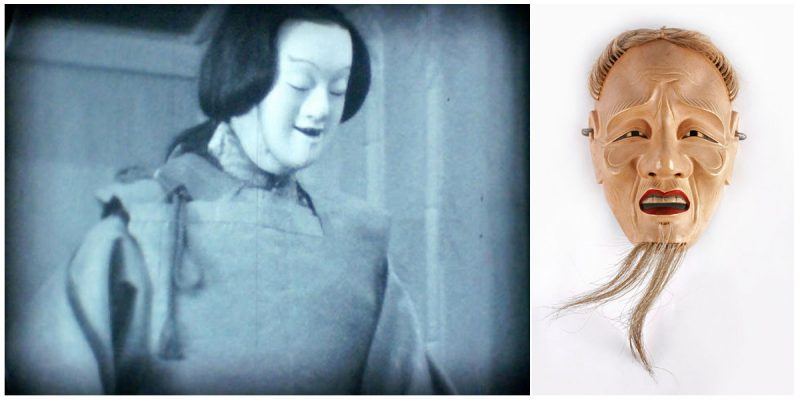The Noh theater is a traditional Japanese theatrical form and one of the oldest extant dramatic forms in the world. It is a musical drama that has been performed since the 14th century. Developed by Kan’ami and his son Zeami, it is the oldest type of theater still regularly performed today.
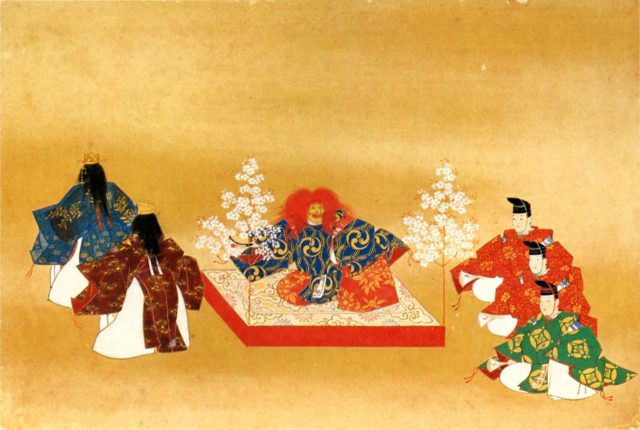
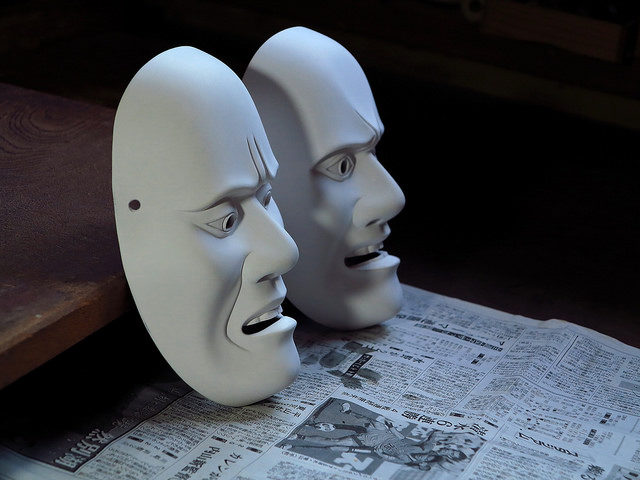
The earliest Noh masks were carved in the Kamakura period (1192-1333). They are very realistic, taking their shape from the pictures and statues of Buddha and belong to a highly developed theatrical tradition. Because the effect was considered to be an important ingredient in the Noh drama, the masks were used to convey the mood and character of the part played by the performer. Its purpose used to be strictly religious, but this had long since changed.
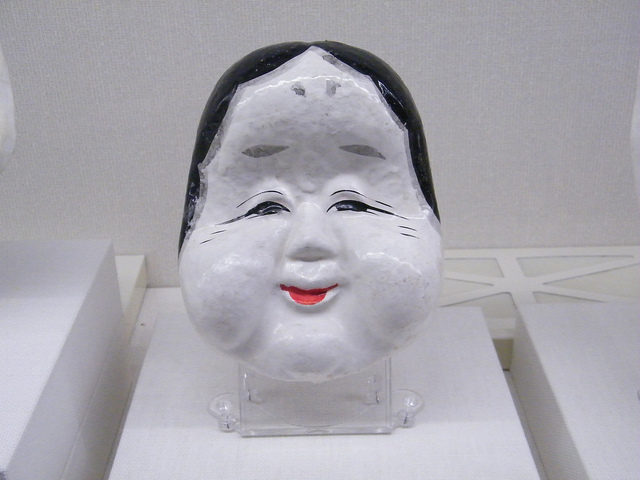
There are approximately 450 different masks mostly based on sixty types, all of which have distinctive names. The masks are carved from blocks of Japanese cypress, and painted with natural pigments on a neutral base of glue and crunched seashell. Some of the masks eyes are inlaid with metal leaving a tiny hole, and the hair and the outlines of the eyes are traced with black ink.
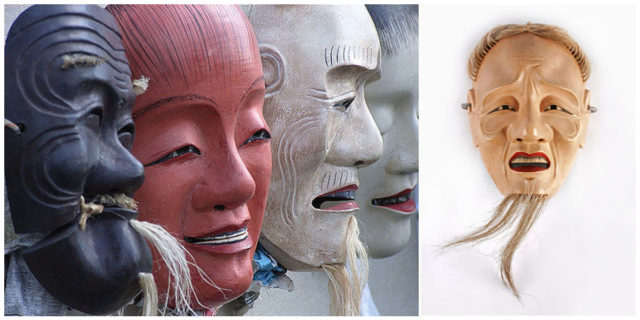
There are five categories of Noh masks: gods, demons, men, women and the elderly. Some of the masks are frequently used in many different plays, while some are more specific and may only be used in one or two plays.
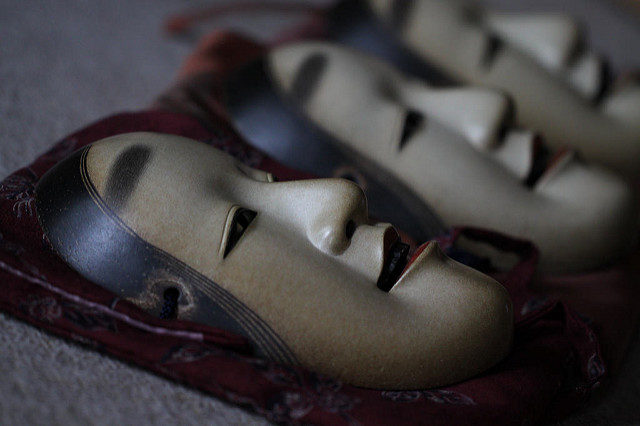
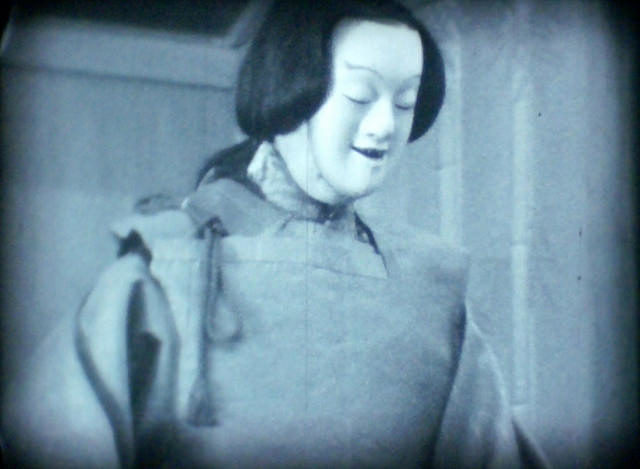
Only the shite, the main actor, wears a mask in most plays, even though the tsure (The shite’s companion) may also wear a mask in some plays to represent female characters. In one female mask, one can see the feeling of joy, anger, grief, and happiness. One of the most well-known female demon masks is the horned Noh mask of Hannaya, an angry spirit.
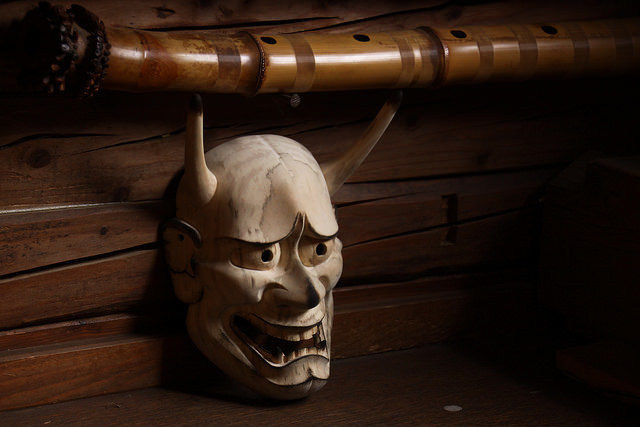
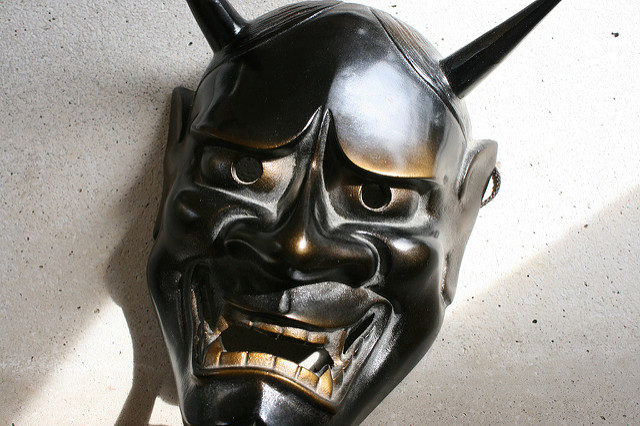
There is a curious technique used in this performances which involves slightly tilting the mask up or down. Tilting upwards is called terasu (the mask is smiling) and tilting downwards is called kumorasu (the mask is crying). Basically, by using minute movements, the performer can express a full range of emotions.
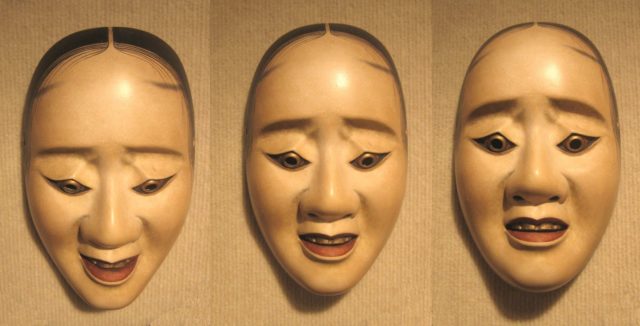
Noh performance combines a variety of elements into a stylistic whole, with each particular element the product of generations of refinement according to Buddhist, Shinto, and Noh principles.
